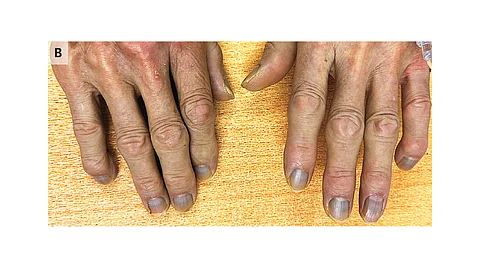An 84-year-old man in Hong Kong puzzled doctors when he was admitted to the hospital with complications related to urinary flow obstruction. His case became even more intriguing due to an unusual grey discoloration of his skin, eyes, and nails—a change that had gradually developed over five years. Despite extensive medical evaluations, the cause remained unclear until blood tests revealed extremely high levels of silver in his body.
The man was diagnosed with argyria, a rare condition caused by the accumulation of silver particles in bodily tissues. This buildup typically results in a bluish-grey discoloration, especially in areas exposed to sunlight. Argyria is generally linked to prolonged exposure to silver through occupational contact, medications, dietary supplements, or topical products containing the metal. However, the patient’s only medication was finasteride, a drug commonly prescribed to treat benign prostate enlargement, which does not contain silver. Moreover, the man had no known occupational or environmental exposure to the metal, adding to the mystery.
Tests confirmed that the silver concentration in his blood was 423 nmol/L—40 times the normal level of less than 10 nmol/L. Silver ions tend to accumulate in various tissues, including the skin, heart, liver, lungs, and even the brain. When exposed to ultraviolet light, these ions undergo a photochemical reaction, resulting in the characteristic grey or blue tone associated with argyria. Interestingly, this process can take years to manifest noticeable discoloration, making it difficult to pinpoint the source of exposure.


